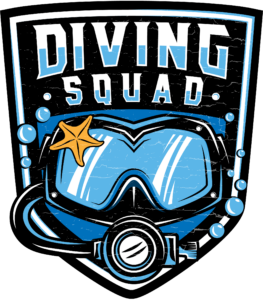
Best Raja Ampat Liveaboard Reviews (2024 EDITION)
LAST UPDATED:
If you’re looking for the best raja ampat liveaboard, there’s something you should know: there’s no such thing as an all-time best raja ampat liveaboard!
It all comes down to you. How much scuba diving experience do you have? What’s your budget? Which part of Raja Ampat do you want to discover?
In this Diving Squad Report, we’ve taken all these questions into account as we review the best raja ampat liveaboards operating this year and next.
We’ve presented the Cheapest Raja Ampat Liveaboard first and list the rest in order of ascending price:
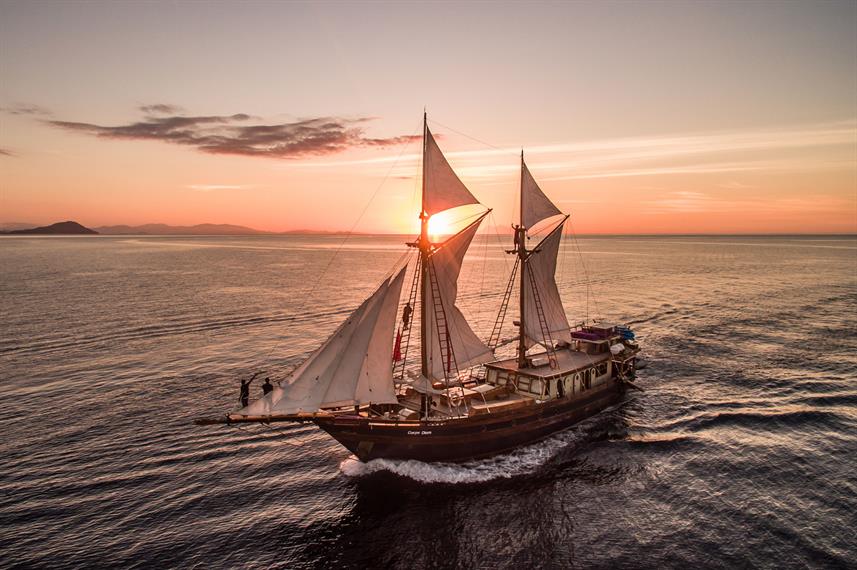
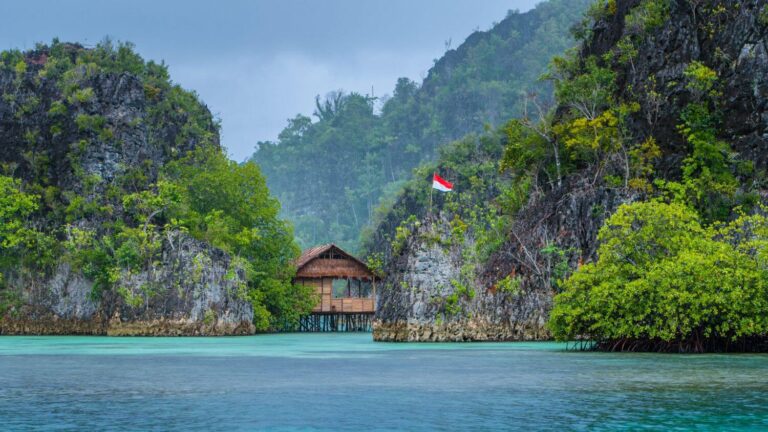
Solitude Adventurer
- A stylish modern yacht; despite her luxurious appearance Solitude Adventurer is actually the cheapest Raja Ampat liveaboard on this list! A quad cabin comes in handy for friends and families.
Jaya
- The second cheapest liveaboard in Raja Ampat, Jaya offers superb value for money on account of the fact that on select days you get to go on an extra 4th dive! She is also beginner friendly.
Epica
- Described as a backpacker hostel on water for divers and operating truly unique trips, Epica is both beginner friendly and the third cheapest Raja Ampat out there!
Ilike
- Another cheap Raja Ampat Liveaboard, Ilike is ideal for advanced divers looking to challenge themselves, whilst exploring the very best of Raja Ampat.
Carpe Diem
- Stunningly furbished, Carpe Diem takes small groups of up to 8 guests, making her an ideal option for those who prefer a more intimate setting.
Mermaid II
- A large and modern liveaboard, Mermaid II has stylish and comfortable social areas, resulting in all round friendly vibes! It’s a great option for large groups with space for 18 guests.
La Galigo
- A traditional Phinisi Vessel, La Galigo has the coolest master cabin of them all. It has a private balcony and lounge, TV & PS4 player and an enormous bed.
Mari
- Mari has several great social areas including 2 sundecks, a bar and an outdoor lounge. This makes it a great option for groups with non divers.
Calico Jack
- Another traditional Phinisi Vessel, Calico Jack is perfect for groups with non divers as she offers many cultural land excursions, kayaking and massages.
Ambai
- Stylish and featuring great amenities; Ambai offers a greater variety of diving routes than any other choice. In addition to diving the very best of Raja Ampat, guests can enjoy many extra activities.
Pindito
- Pindito runs unique Whale & Dolphin Watching Trips, plus offer many Watersports water skiing, wake boarding and stand up paddle boarding.
Damai II
- This beautiful wooden Phinisi vessel has an onboard Spa, bar and many stylish social areas. Several of the cabins have Private Balconies. Damai II runs trips around the very best of Raja Ampat.
Mutiara Laut
- A whopping 46m long vessel, Mutiara Laut”s exciting trips include exclusive, newly discovered dive sites around Raja Ampat. Extra activities include treks and village visits.
Gaia Love
- A beautiful and modern yacht, Gaia Love runs superb diving safaris around the very best of Raja Ampat, with the option to dive off the Spice Islands as well! There’s also a spa and private balcony cabins.
QUICK COMPARE Best Raja Ampat Liveaboards in order of ascending price:
| Get Best Price: | Liveaboard: | Great for: | Longest Itinerary: | Shortest Itinerary: | |
|---|---|---|---|---|---|
| Click Here | Solitude Adventurer | 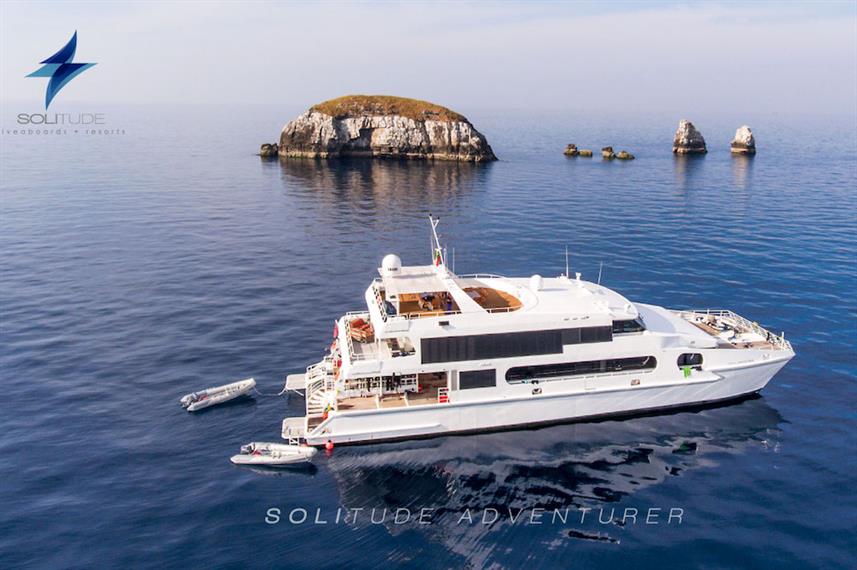 | CHEAPEST, single travellers, big groups, long trips | 13 days | 8 days |
| Click Here | Jaya | 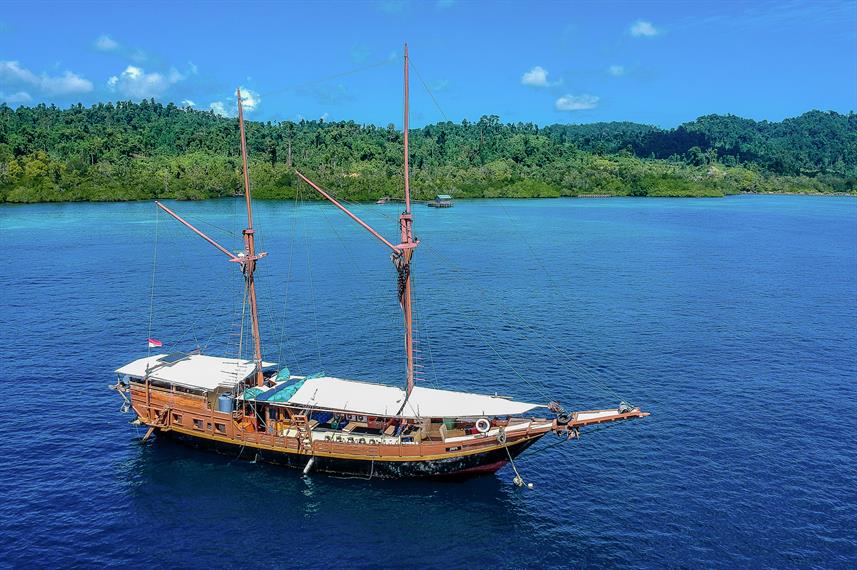 | SECOND CHEAPEST, Extra Dives, Beginners | 9 days | 7 days |
| Click Here | Epica | 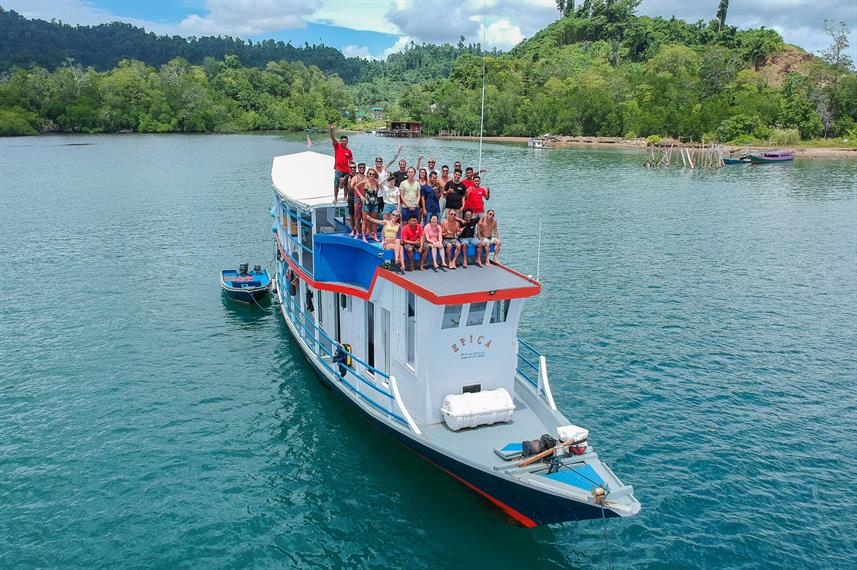 | THIRD CHEAPEST, Backpackers, Singles, Beginners, Unique Itineraries | 10 days | 7 days |
| Click Here | Ilike | 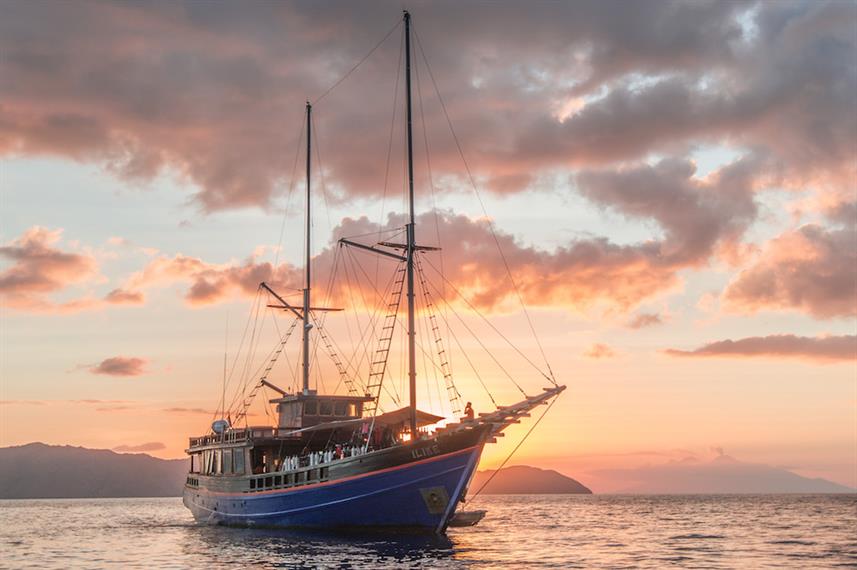 | Advanced Divers, Great Routes, Digital Detoxes | 13 days | 9 days |
| Click Here | Carpe Diem | 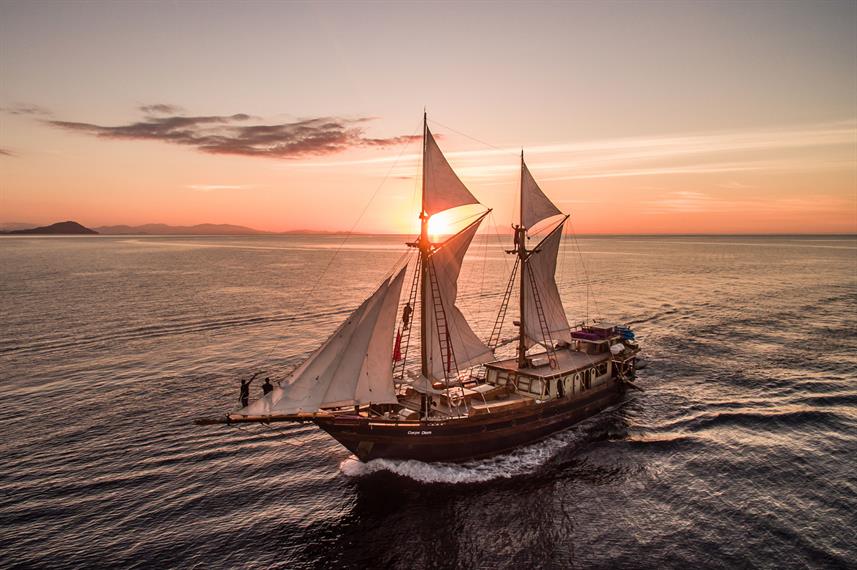 | Small groups, friends, short trips | 10 days | 6 days |
| Click Here | Mermaid II | 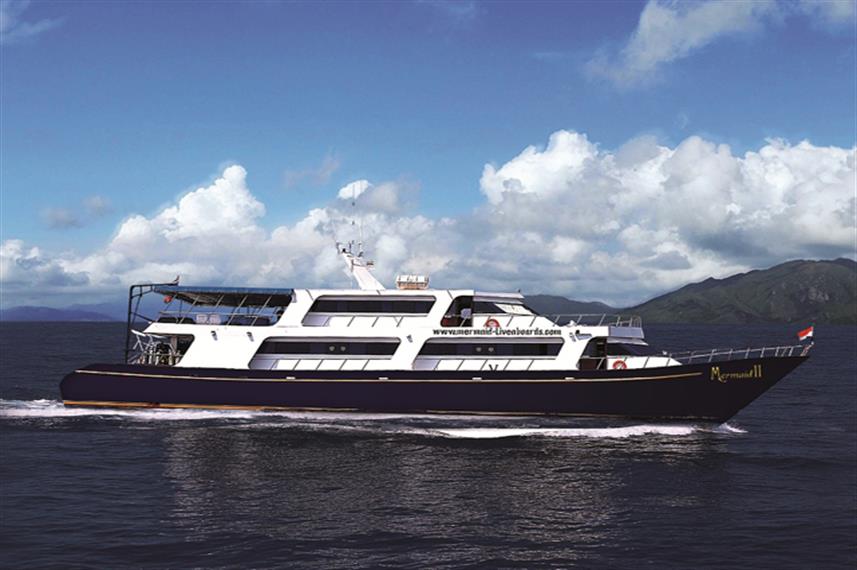 | Single travellers, long trips, non divers. | 16 days | 9 days |
| Click Here | La Galigo | 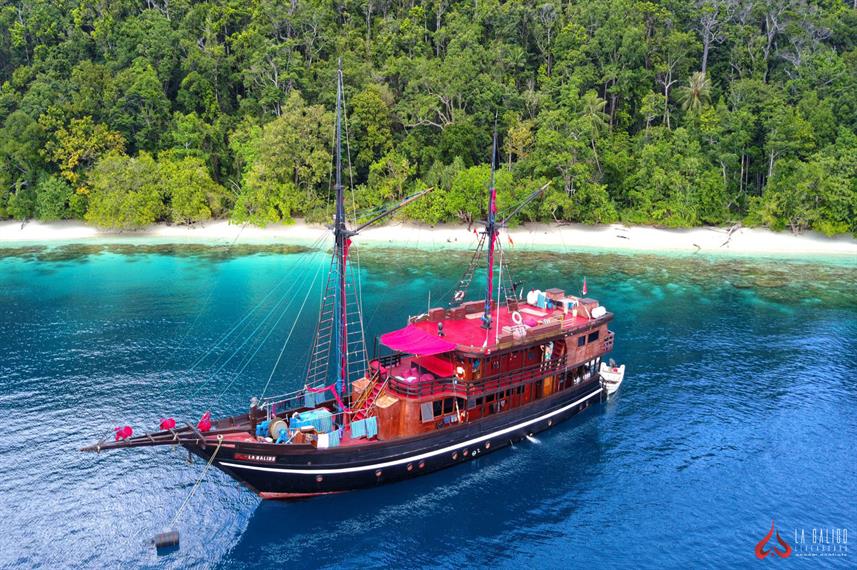 | Bigger groups, couples & luxury cabin. | 12 days | 8 days |
| Click Here | Mari | 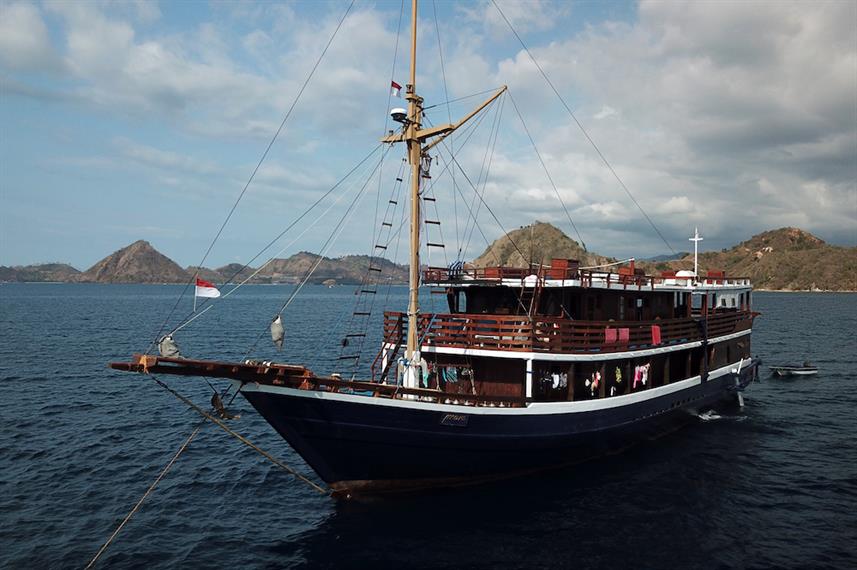 | Families, Long Trips, Short Trips, Advanced Divers | 14 days | 9 days |
| Click Here | Calico Jack | 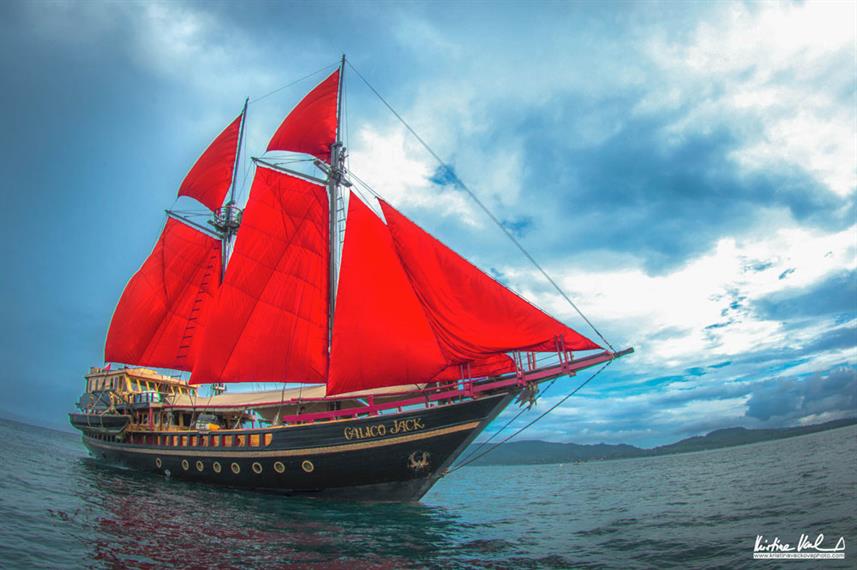 | Photographers, small groups, non – divers. | 12 days | 9 days |
| Click Here | Ambai | 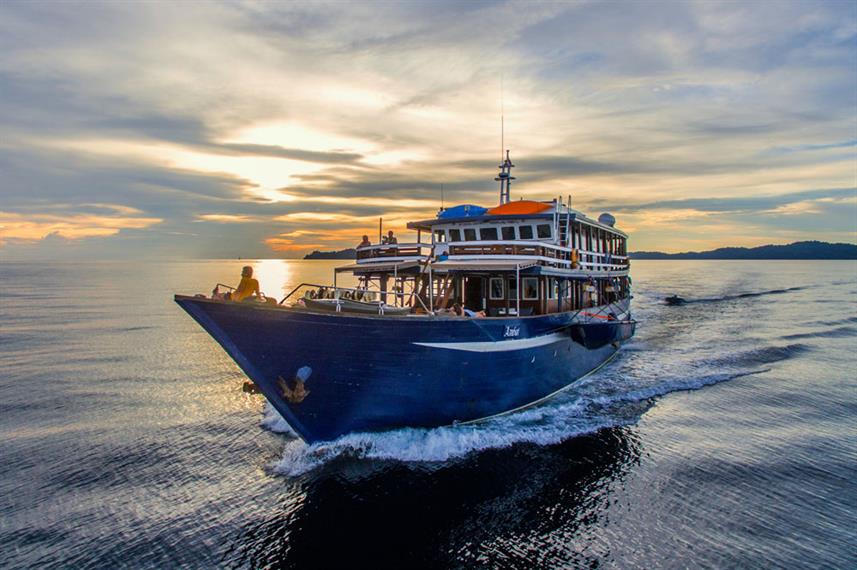 | Water sports, couples, longer trips | 14 days | 9 days |
| Click Here | Pidito | 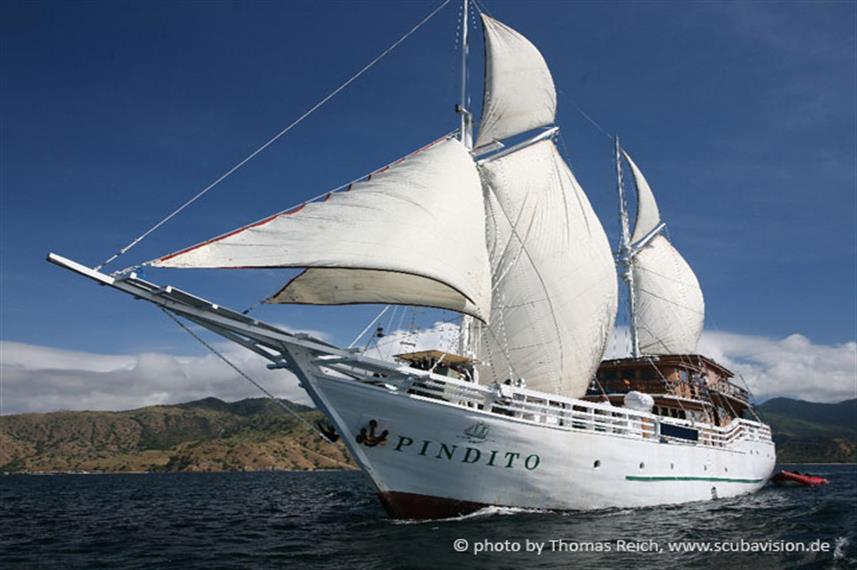 | Whale & Dolphin Watching, Beginners | 13 days | 12 days |
| Click Here | Damai II | 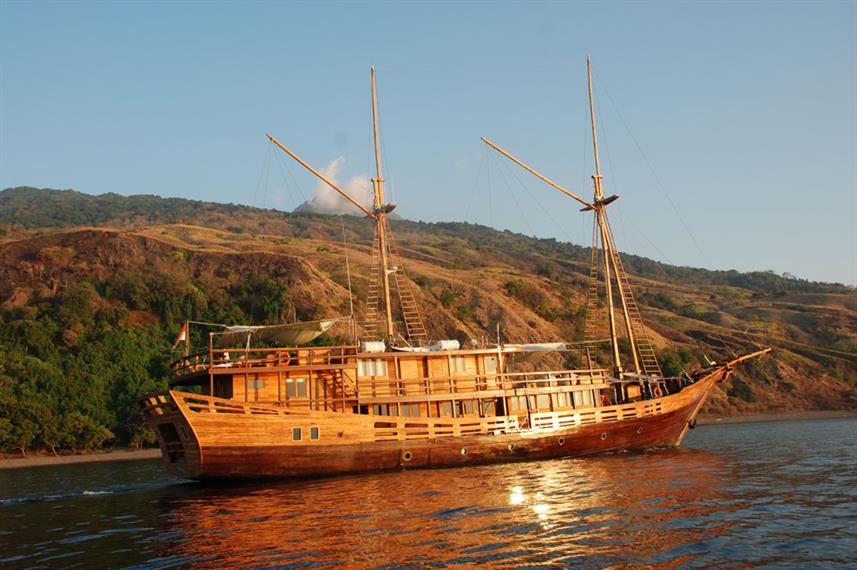 | Couples, Small Groups | 14 days | 8 days |
| Click Here | Mutiara Laut | 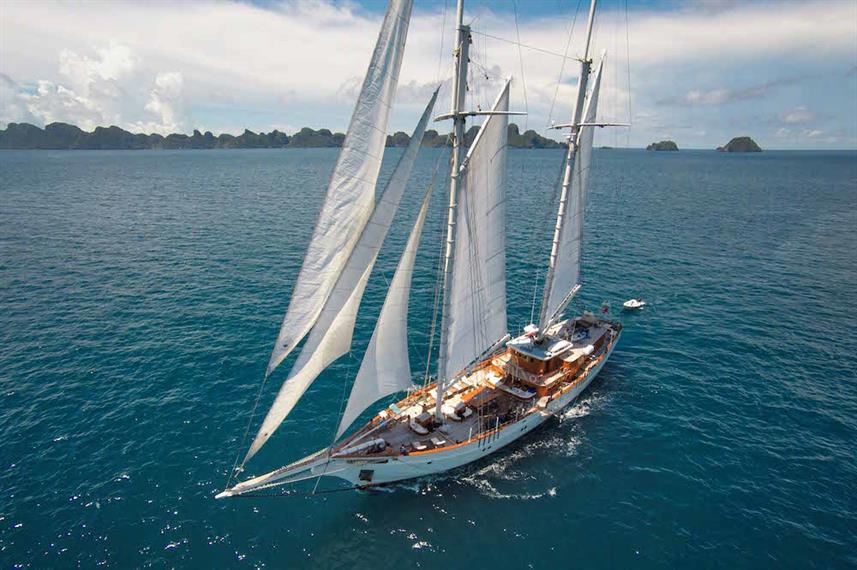 | Non – Divers, Exclusive Dive Sites | 13 days | 8 days |
| Click Here | Gaia Love | 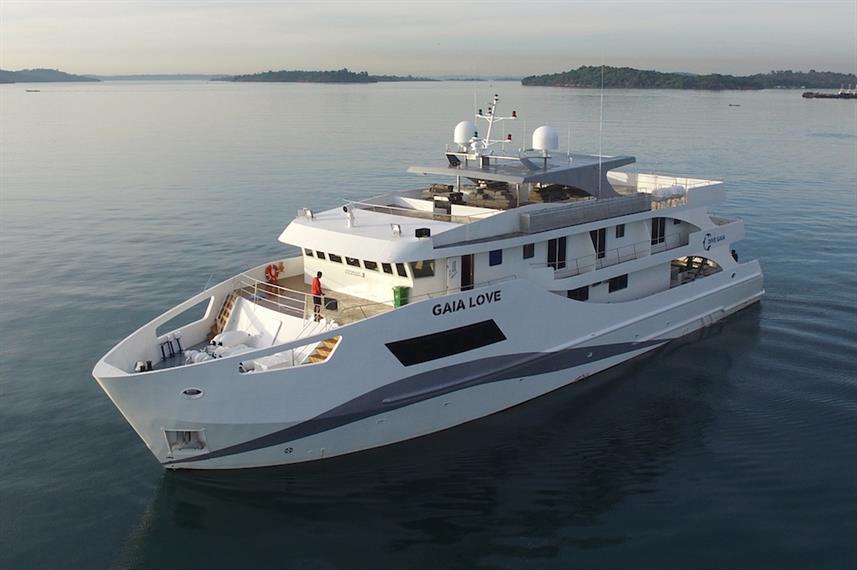 | Luxury, Couples, Beginners | 12 days | 8 days |
Raja Ampat Regions & Liveaboard Routes
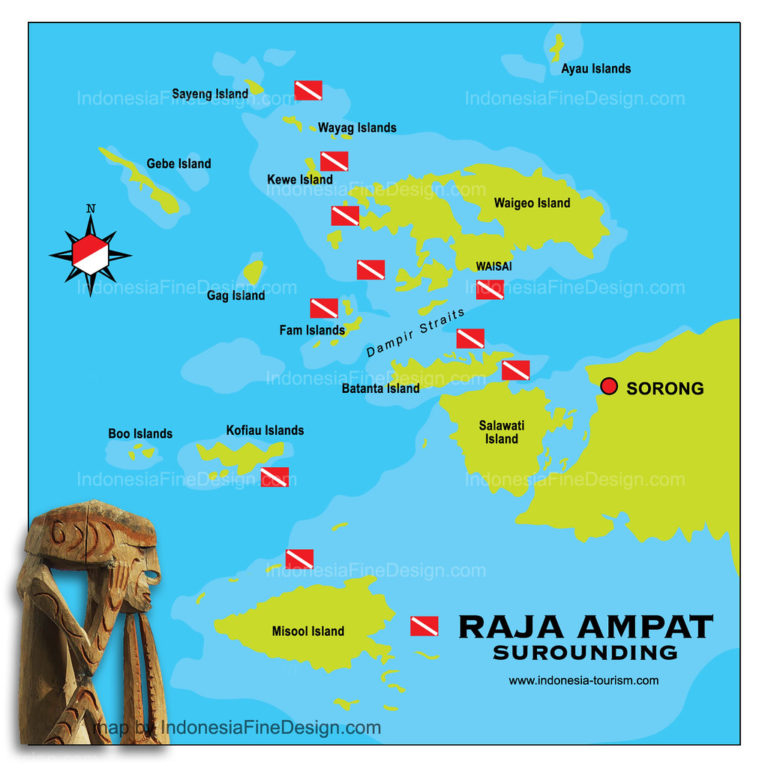
Raja Ampat is a sprawling archipelago with many potential routes for liveaboards to travel along.
Generally, each liveaboard offers several itineraries that vary in length and explore some or all of the regions of Raja Ampat. Of course there is variation between different liveaboards in terms of specific dive sites and the order in which regions are visited, but all Raja Ampat liveaboard routes can be divided into one of the four following categories of itinerary:
- Central & North Routes.
- Central & South Routes.
- Central, North & South Routes
- 1, 2 or 3 plus additional areas of nearby Indonesia.
What are the diving regions in Raja Ampat like and what other parts of nearby Indonesia can you also explore during your Raja Ampat liveaboard safari? Let’s take a look.
Central Region (aka Dampier Strait):
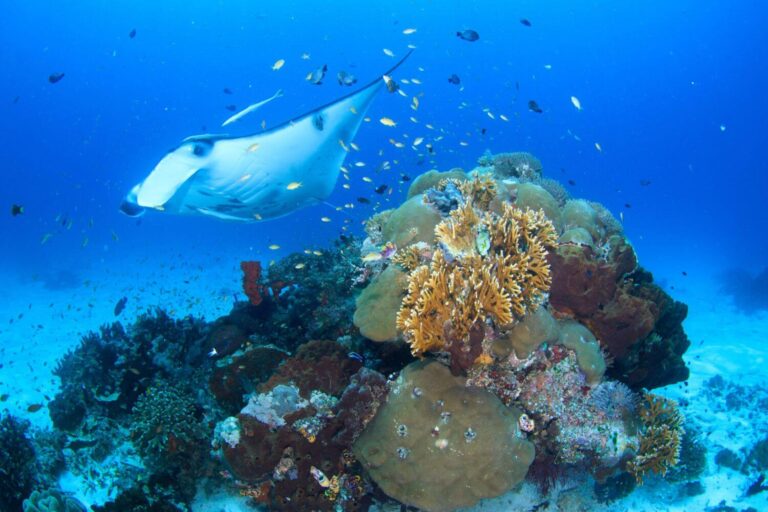
The oceanic current of the Indonesian throughflow is at it’s most concentrated as it passes between the islands comprising central Raja Ampat (namely Waigeo, Batanta, Mansuar and the Jef Fam islands), resulting in bountiful reefs, many large pelagic fish and an abundance of adrenaline pumping drift dives.
Generally, central Raja Ampat is seen as the absolute best part of the archipelago to spot large groups of manta rays! At the right time of year, it is also the most likely region to spot marine mammals like whales, dolphins and dugong. Furthermore, there are large numbers of reef sharks, reef fish and turtles found throughout most dive sites.
There are several great muck diving sites around the more sheltered parts of Batanta as well as a number of caves to be explored within the bays of Waigeo and the Jeft Fam Group, in addition to several great wreck dives throughout.
When scuba divers first came to Raja Ampat, it was the central region that they explored first! Subsequently, it is the most well known region. Because it is also the most densely populated region of Raja Ampat, most dive resorts are based around here.
Generally, all Raja Ampat liveaboards explore the central region before going on to explore the other regions.
North Region (aka Wayag Islands):
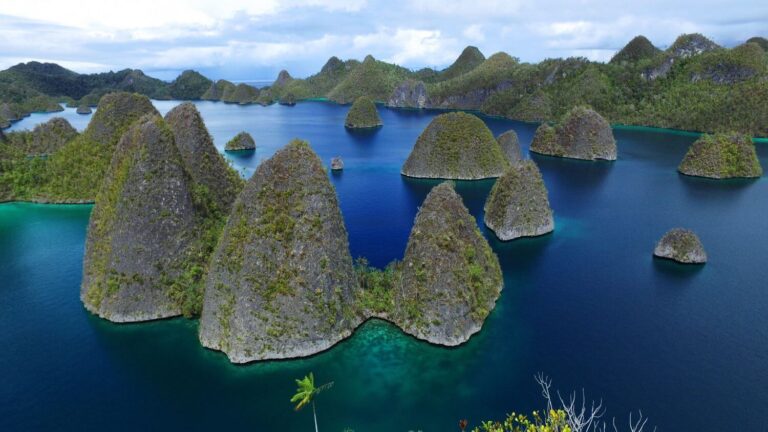
The waters off Waigeos western side present a number of sites that allow divers to see a diversity of both large and small marine life within the same dive.
There’s several great dives in Sal Pel Bay where one can encounter sailor shrimps, cuttlefish and nudibranch among the various bommies whilst seeing large fusiliers, napoleon wrasse and reef sharks swimming through the open waters around them.
Northern routes travel further to the uninhabited Kawe island where there’s a network of underwater boulders and tunnels awaiting exploration by adventurous divers amidst manta rays and endemic tasselled wobbeogng sharks.
At the northernmost point of Raja Ampat are the iconic Wayag islands, which are comprised of a range of very dramatic jungle coated cliffs. Without a doubt this is the most stunning part of the entire archipegalo, from an island point of view!
The Wayag Islands are also uninhabited, being a National Park; but you can visit them ranger station there. One need only wade knee deep into the water around the ranger station to encounter many friendly reef sharks.
South Region (aka Misool):
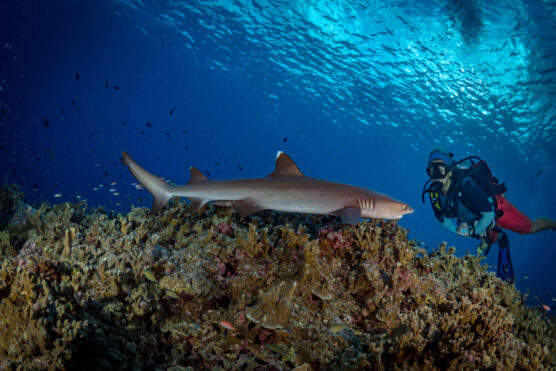
Comprised of Misool and the many tiny islets surrounding it, Raja Ampat’s deep south is the most mysterious and least explored of all it’s regions. New dive sites are still being discovered here!
The southern region is perhaps most known for it’s many sharks which include reef sharks, wobbegong sharks, whale sharks and hammerheads. This is also the best place for seeing big pelagic fish like giant grouper, great barracuda, sweetlips and tuna.
Around Misool, the blue water mangrove lagoons make for a unique diving experience – things get even more surreal upon swimming in one of the three freshwater ponds on Misool, that are filled with non-stinging jellyfish.
Furthermore, there are several shallow dives over stunning coral gardens here, devoid of current, making them some of the few dive sites in Raja Ampat that are beginner friendly. These are a great place for spotting pygmy seahorses, pipefish and various cephalopods!
+ Other Regions in Indonesia:
A few Raja Ampat liveaboards offer trips that explore central and southern Raja Ampat, before journeying onwards to discover diving in another part of nearby Indonesia, usually either:
- Triton Bay – located on the south side of mainland papua, Triton Bay is a great place for whale sharks, soft corals and many large pelagic fish.
- Ambon Island – of Indonesia’s Maluku Province is further down south from Misool. Rarely visited, it’s a great place for reefs and sharks as well as a cultural land excursion.
For an all encompassing look at what Raja Ampat is like – both to dive and as a place in general, as well as info on diving season, how to get there and an in depth breakdown of the various diving regions, check out this article! Or keep reading below, for a very brief synopsis:
Raja Ampat Diving Season
Raja Ampat has a set diving season! Do take note that when reviewing liveaboards, although many say they operate year around, outside of raja amapt diving season most (but not all) relocate to Komodo. It’s therefore crucial to know when the best time to dive in raja Ampat is
October-April: This is the best time to dive Raja Ampat. Raja Ampat has notoriously unpredictable weather that can lead to some tricky scheduling headaches.
However, your best bet for spectacular diving is typically from October to April, when there is much less rain and incredible visibility. This is also one of the best times to see mantas in the area!
May – September: This timeframe marks the time when the wind begins to pick up drastically in the Raja Ampat area, and rains become much more frequent.
Together, these two aspects can seriously hinder diving; many liveaboards relocate to the Komodo National Park area for this chunk of the year.
How to Get to Raja Ampat
First of, you need to get to Sorong. There’s no direct international flights here, but you can fly in via Jakarta, Makassar, Ambon (some liveaboards leave from Ambon!) or Manado. It’s also possible to fly there from Bali, with a stopover.
We recommend going with one of the following airlines: Lion Air, Xpress Airways, Sriwijaya Airlines, Nam Airlines or Garuda Indonesia.
Generally speaking, a return flight from Jakarta will cost around $450- $600. Flights from Bali should cost aroudn the same.
Click Here for our favourite place to book cheap flights with some excellent last minute deals. Do note there are not ATM’s in Sorong so make sure you have plenty of cash before hand!
Fortunately once you’ve reached Sorong there’s no need to concern yourself with any of the rest of getting to Raja Ampat. That’s because to make life simple for their guests, most liveaboard operators offer transfer services from Sorong Airport and hotels directly to and from their vessels. Nice!
What it's like diving at Raja Ampat
An east Indonesian province, Raja Ampat is an island archipelago that shatters away from the north western tip of New Guinea.
The four main islands aka “The Four Kings” are Batanta, Misool, Salawati and Waigeo.
In addition to these, there’s also over a thousand smaller islands, cays and shoals that make up Raja Ampat.
Due to the low human population here, most of these islands are uninhabited and draped in lush jungle that make for stunning scenery.
But it is the crystal clear waters around these islands that attract scuba divers who are looking for a truly exceptional experience. They’re literally teaming with life. How much?
Let’s find out:
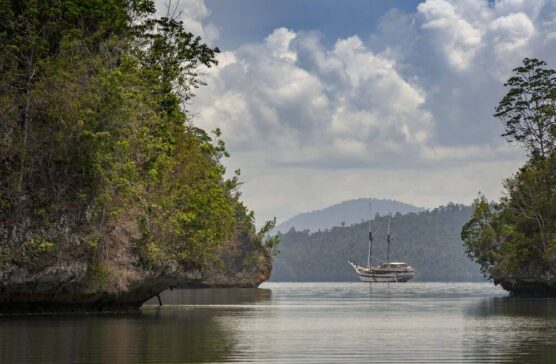
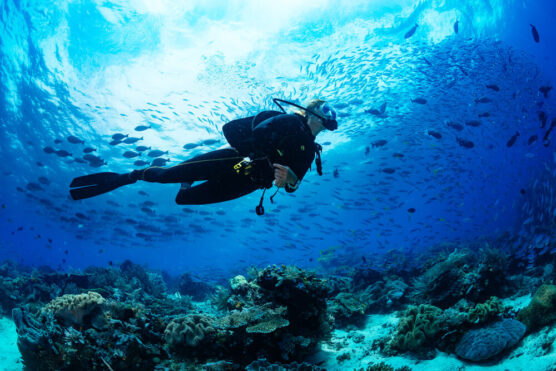
What Lives in Raja Ampat?
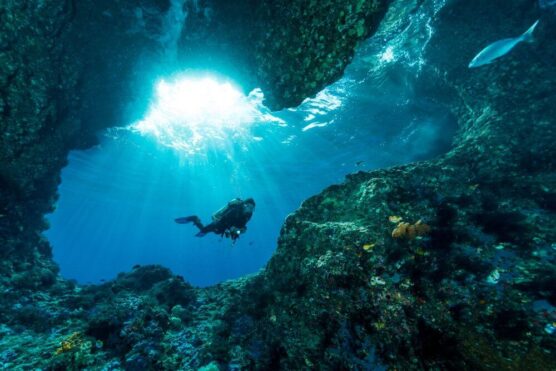
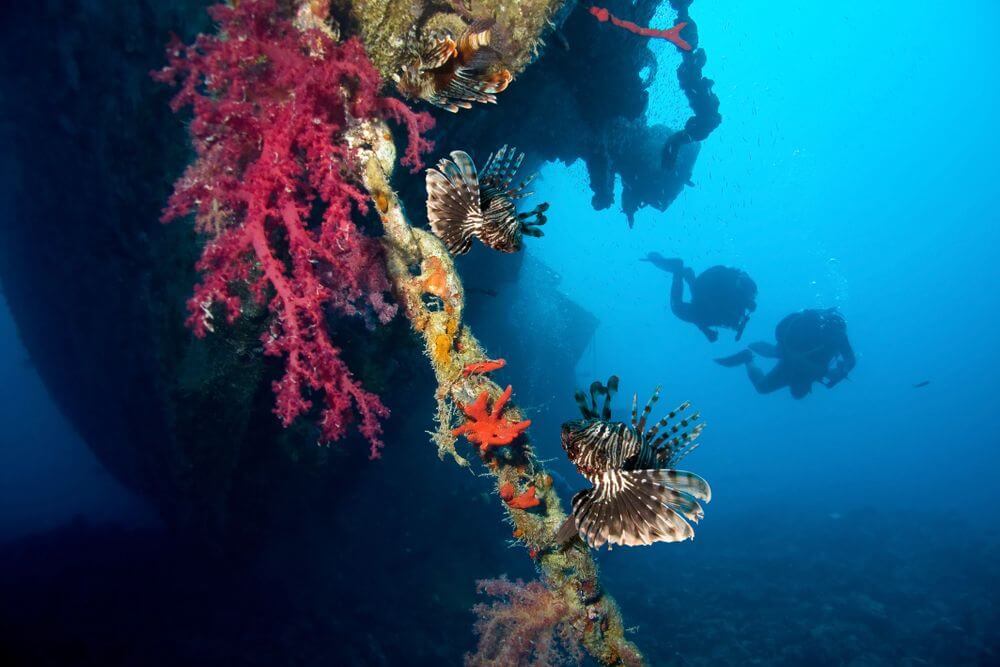
The range of diving to be had at Raja Ampat is absolutely phenomenal.
Numerous American and Japanese shipwrecks rise up from the sea bed at many of the best dive sites, relics from World War 2.
Frequently occurring currents also allow for adrenaline blasting drift dives.
This is why for many of the raja ampat liveaboards previous dive experience is required – although some are beginner friendly.
Add to that a spectacular range of wall dives, macro critters awaiting their pictures to be taken, cave dives and numerous incredible night dives…
…and it’s easy to see why Raja Ampat is a truly special diving location.
This is just a brief description. You can find out much more about Raja Ampat diving here.
Raja Ampat Budget / Rate
There’s an insane variety fo scope between how much you can spend on a liveaboard around Raja Ampat.
Not only are there vessels to suit every budget; you can also pay different amounts on each vessel, depending on which accommodation option you choose.
Of course, some vessels also embark on much longer diving trips than others, so those trying to save cash should consider a shorter route.
If you skip back up to the the reviews on this page, you’ll see we’ve covered mid range liveaboard cruises but we also have separate articles reviewing the best liveaboards in raja ampat for those on a low budget…as well as an article specifically for glamorous luxury vessels!
Although it’s nothing to do with Raja Ampat Scuba Diving, our friends at Culture Trip have a great article on how to save money whilst travelling in Indonesia.

4 of Our Favourite Dive Sites at Raja Ampat
Penemu Island
Located to the South West of Batanta, this a gem of a diving area within the Raja Ampat area that is home to some of the region’s largest concentrations of schooling fish.
These fish include schools of fusiliers, batfish, trevallies, and jack fish, and are often found in the highest numbers near the South Penemu area that features a massive coral-encrusted pinnacle. If mentioning corals piqued your interest, then head to the east side of the island, where massive walls and slopes abound.
All are covered in vibrant hues of coral formations and may even have a few grey sharks and mantas nearby! Melissa’s Garden is also an ideal location to view endless coral formations arrayed throughout a massively spectacular reef system.

Arborek Island
Located on the edge of the Dampier Strait, the tiny fishing village of Arborek reaps the benefits of the healthy marine and reef life within the strait. Diving below its famous pier, you’ll see huge colonies of coral firmly entrenched on the pier’s posts, while massive schools of jacks swirl left and right.
As you head deeper towards the small but healthy reef, pipefish and cuttlefish will slowly appear to greet you. The healthy populations of giant clams, skeleton shrimp, and hermit crabs nestled amongst the vibrant corals make for a beautiful, diverse, and wildlife-filled dive!
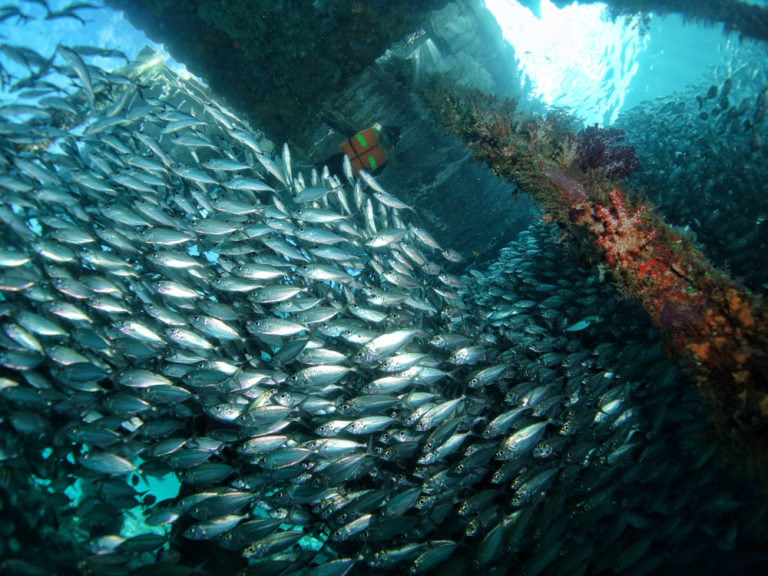
Manta Ridge
This is one of the best dive sites in the Raja Ampat area for you to spot several mantas at the same time, and enjoy many other reef dwelling fish. The cleaning stations along the reef are crewed by countless trevallies, that rush in to attend the huge mantas as they gracefully glide into place.
You can typically expect to see five or so mantas in a single dive, but some divers may be lucky enough to see up to 20 or 30! As you head into deeper waters around the reef, bump head parrot fish, black tip reef sharks, and blacklips can all be seen in abundance! Graceful sea turtles are often spotted at this site too.
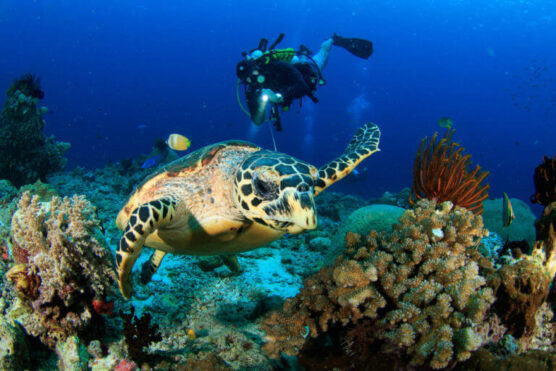
Cape Kri
The coral encrusted wall that makes the cape is a beacon to massive schools of trevallies, sweetlips, and bannerfish, that are almost overwhelming as you get lost in their swirling mass. The incredible coral formations along the wall are equally mesmerizing and add splashes of color to the deep blue of the surrounding ocean.
If you take the time to examine that blue water a little more closely, you’ll likely spot grey reef sharks, barracuda, tuna, and possibly mantas! Cape Kri is an ideal dive site for big fish viewing, which can be balanced by the beautiful nearby corals!
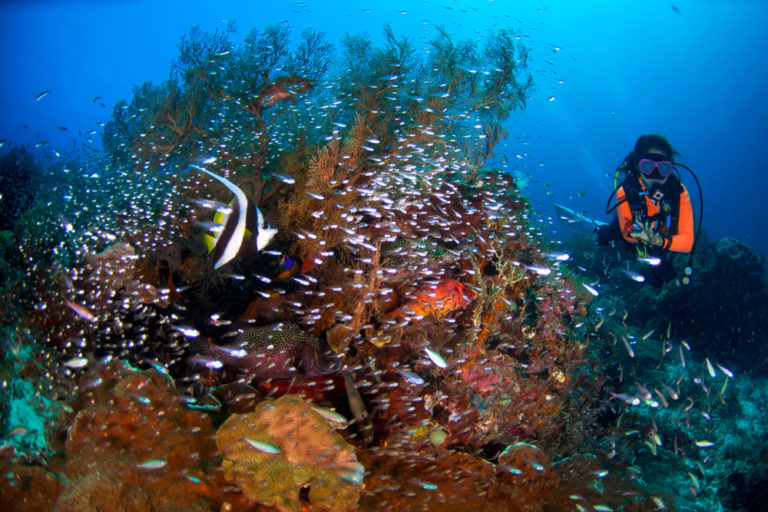
Raja Ampat: The Four Kings

Raja Ampat – ‘the four kings’ – is indeed a jewel of Indonesian diving that has something for just about every diver out there; from incredible coral reefs and their attending small fish and marine life – such as pygmy seahorses, cuttlefish, and nudibranchs – all the way to large pelagic fish that include mantas, reef sharks, sea turtles, and wobbegong sharks.
The region comprises the four primary islands of Misool, Batanta, Waigeo, and Salawati, but also includes hundreds of small islands, seamounts, and reefs that are all ripe for exploring!
Batanta
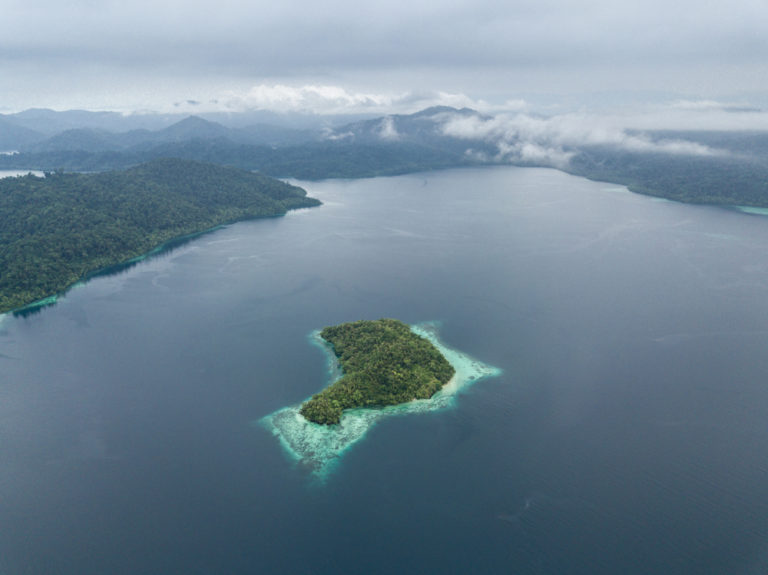
One of the famous ‘four kings’ for which Raja Ampat is renowned, Batanta departs from the stereotypical vibrant coral and colors of the region and instead opts for near endless opportunities for muck diving!
The black sand bays that populate this area allow you to get up close and personal with the macro sea life – pipefish, octopus, nudibranchs, and seahorses.
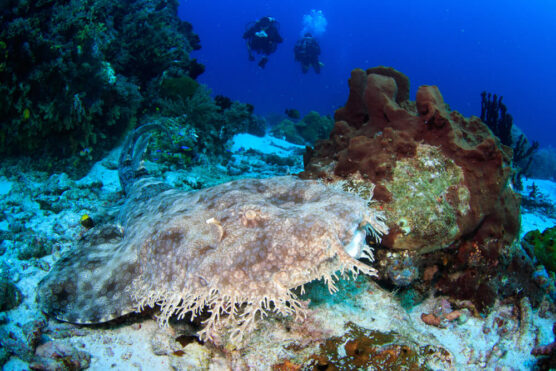
It is an ideal location for you wildlife photographers out there! Just be sure to stick close to your guides as they will know the best spots to look for the critters.
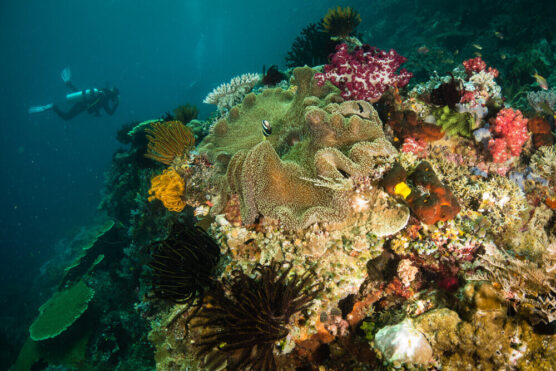
Misool
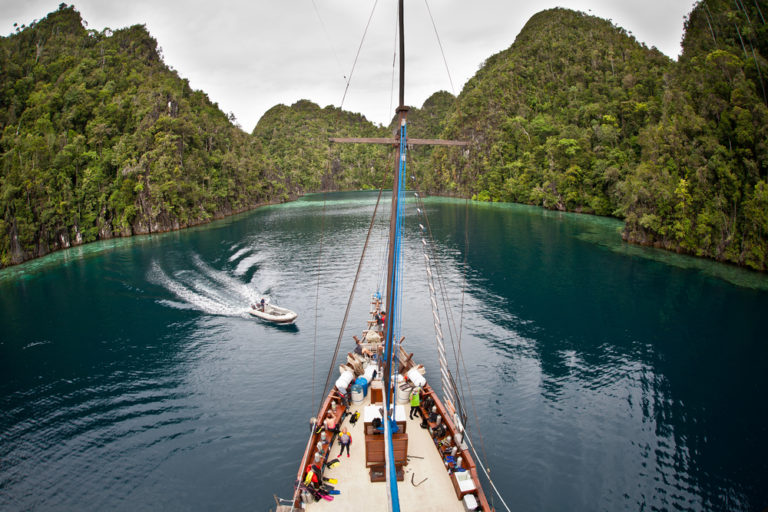
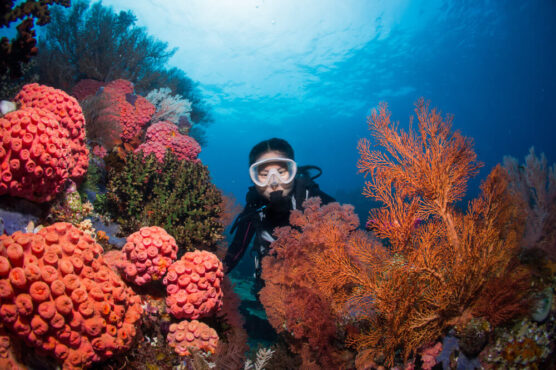
This throughflow also brings giant schools of majestic mantas and sea turtles to the area. Misool is also an excellent location to experience the rare opportunity for mangrove diving in crystal clear water at the Blue Water Mangroves.
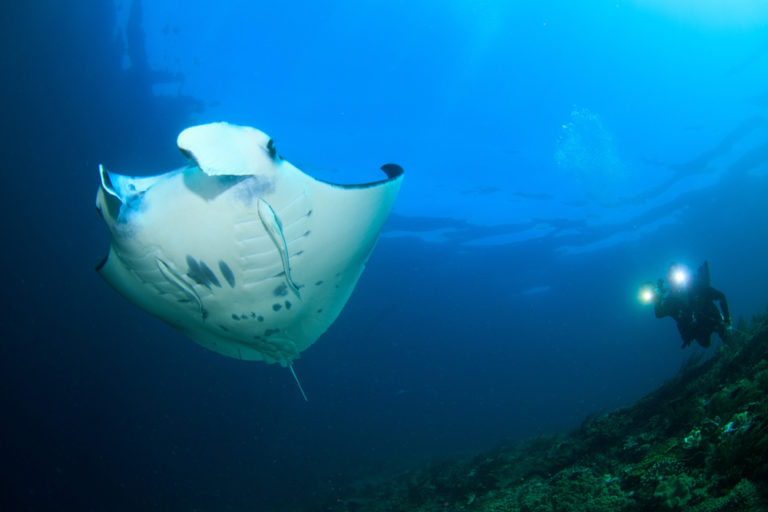
Dampier Strait
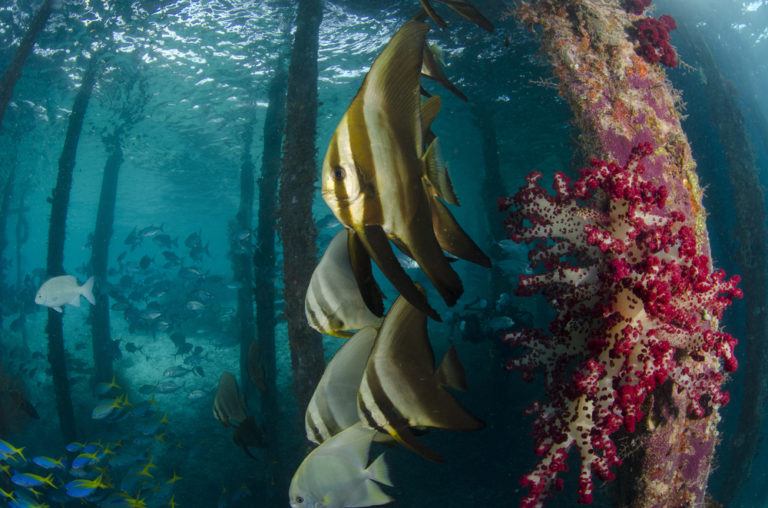
This area includes the stretch of water just to the north of Batanta Island and is host to the Indonesian Throughflow that we mentioned earlier.
The sea is narrowed due to the nearby landmasses, and physics dictates that the water velocity must increase as the flow area decreases – voila, we have the throughflow!
The increased water velocity churns up rich nutrients from deep in the ocean and brings them to the surface, much to the delight of the reef systems in the area.
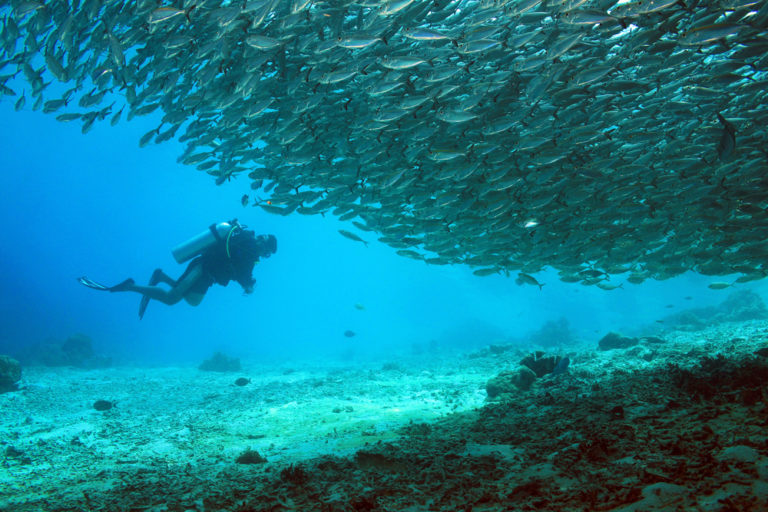
In fact, you’ll notice distinctly healthy and vibrant coral life on the throughflow-facing reefs, complete with stunning gorgonian fans, sponges, and vibrant corals that all form a painter’s palette of reds and oranges.
The healthy reef life, in turn, attracts plenty of trevallies, bump head parrotfish, and sweetlips for you to snap pictures of. Be sure to look towards the ocean side, however, as you’ll spot lurking barracudas, grey reef sharks, and mantas aplenty.
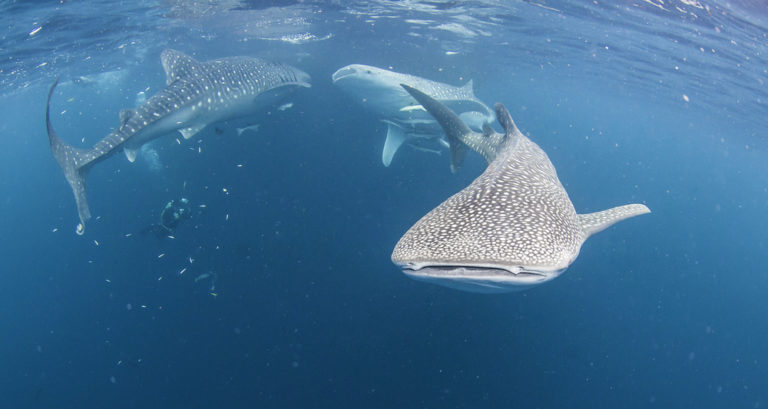
Diving Squad Debriefing
And there it be! We’ve reviewed the very best raja ampat liveaboards for every budget, trip length, travel style preference and all else in between.
Raja Ampat is undeniably one of the best and most popular destinations to scuba dive in the world right now and with extremely good reason.
No matter what kind of liveaboard experience you’re looking to have in raja ampat, you’ll now be fully equipped with all the knowledge you need. Give yourself a big, wet slap on the back. Diving Squad Out.
Support the Squad!
Some of the links in our content are affiliate links. This means that if you buy a product, book a liveaboard, book accommodation or purchase insurance, we earn a small commission at no extra cost to you. Thanks!
Written by:
Alex
